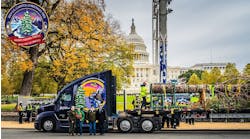The White House Office of Management and Budget has cleared the entry-level driving training rule, meaning that, if the Federal Motor Carrier Safety Administration makes recommended changes, the first-ever federal CDL curriculum standards should be published by the end of the year—or even by the end of the month.
The long-awaited plan was expedited by a “negotiated rulemaking” in which an industry panel got together to hammer out the regulatory details—the result being a “consensus” recommendation that then advanced quickly and without controversy through the federal regulatory development process.
In the rule as published last March, FMCSA proposes new training standards for individuals applying for an initial CDL, an upgrade of their CDL1 (e.g., a Class B CDL holder seeking a Class A CDL), or a hazardous materials, passenger, or school bus endorsement for their license. (Military drivers, farmers, and firefighters are generally excepted from the CDL requirements in part 383, and they are excepted from this proposed rule, FMCSA notes.)
The curricula are subdivided into theory and behind-the-wheel (BTW) range and public road segments.
There is no proposed minimum number of hours that driver-trainees must spend on the theory portions of any of the individual curricula. The NPRM does propose that Class A CDL driver-trainees must receive a minimum of 30 hours of BTW training, with a minimum of 10 hours on a driving range. Driving on a public road would also be required, and Class A CDL driver-trainees may fulfill this requirement by either driving 10 hours on a public road, or by driving 10 public road trips (each no less than 50 minutes in duration).
And “irrespective of the number of hours of BTW training,” the training provider must not issue the training certificate unless the student “demonstrates proficiency” in operating a commercial vehicle.
In the most recent Report on DOT Significant Rulemakings, FMCSA projected a 10-day wait from OMB clearance to publication of the rule in the Federal Register.




